Abstract
A behavioral testing method was demonstrated to be applicable to the study of detrimental drug effects on complex behavior in rats. The method required the subject (S) to respond in a certain sequence to four identical response sites spaced 90° apart within a cylindrical test compartment. After each S was shaped to perform its one particular sequence within this quadrilaterally symmetrical environment, and its performance was brought to a stable level, drug effects were then studied on a battery of such Ss whose sequential response habits were representative of a continuum of sequence complexity. Experiments with a drug which induces hallucinatory and confusional states in man showed that the method yields in the rat quantitative measures of detrimental behavioral effects in terms of dose-response and dose-time relationships in addition to providing an estimate of the interactive effect between drug dose and behavioral complexity. It was found that for a given magnitude of behavioral detriment, drug dose and behavioral complexity of sequence were inversely related. That is, a S required to perform a simple sequence needed a larger drug dose to interfere with its habit a unit amount that did a S with a more complex one; or, expressed another way, a given drug dose had a greater behavioral effect the more complex the sequence. Finally, an empirical ranking of response sequences along a functional behavioral complexity dimension was presented.
Full text
PDF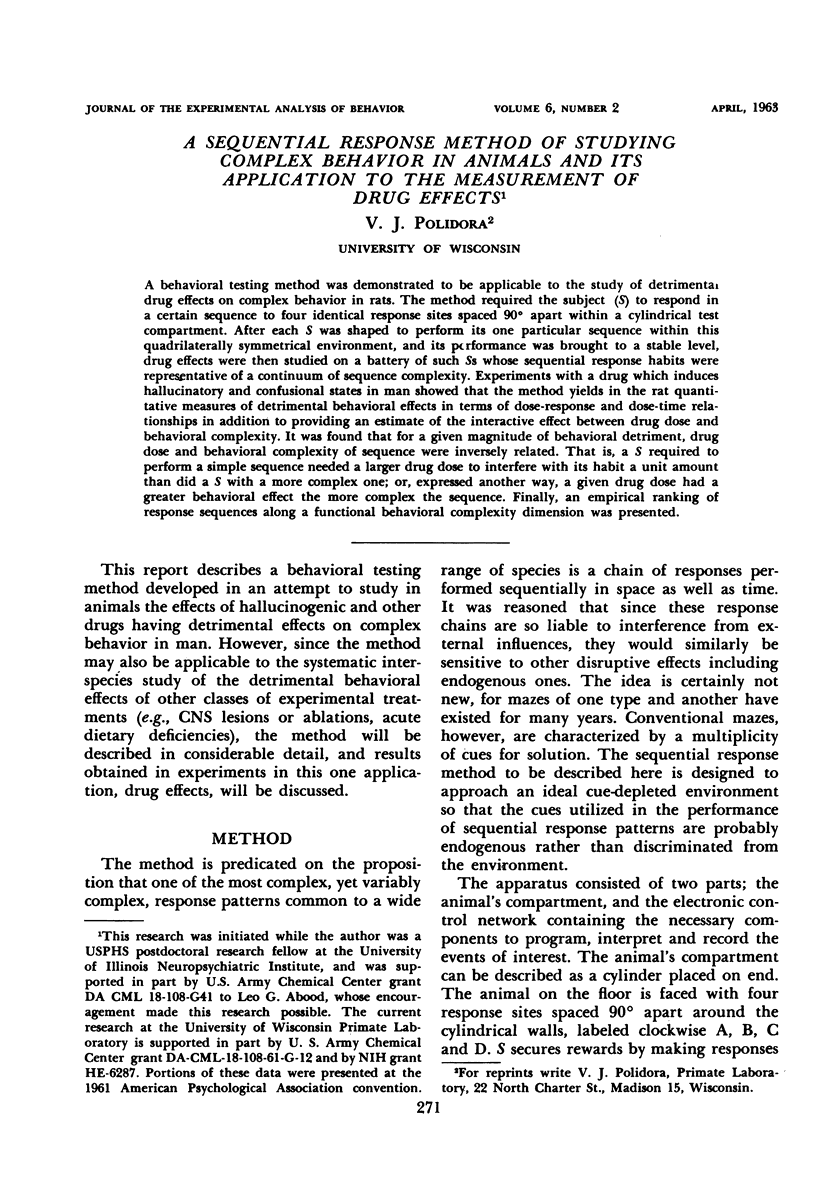
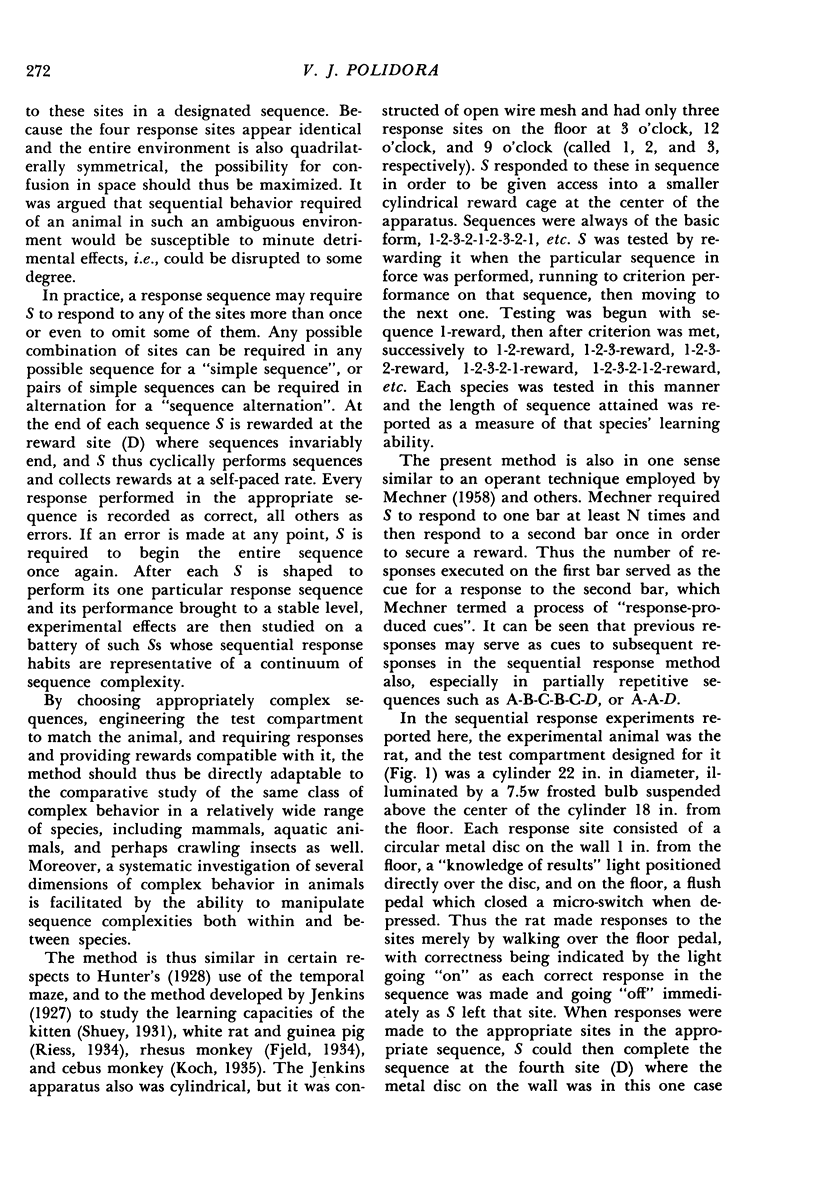
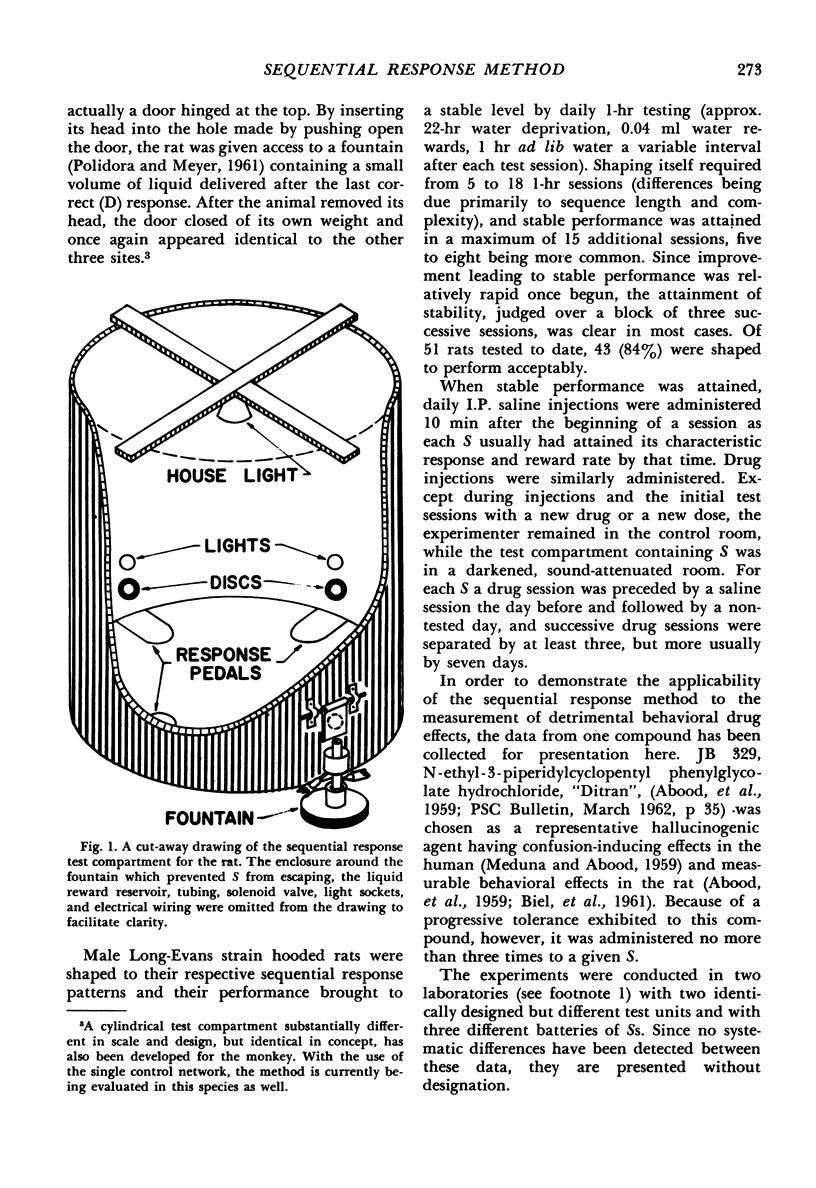
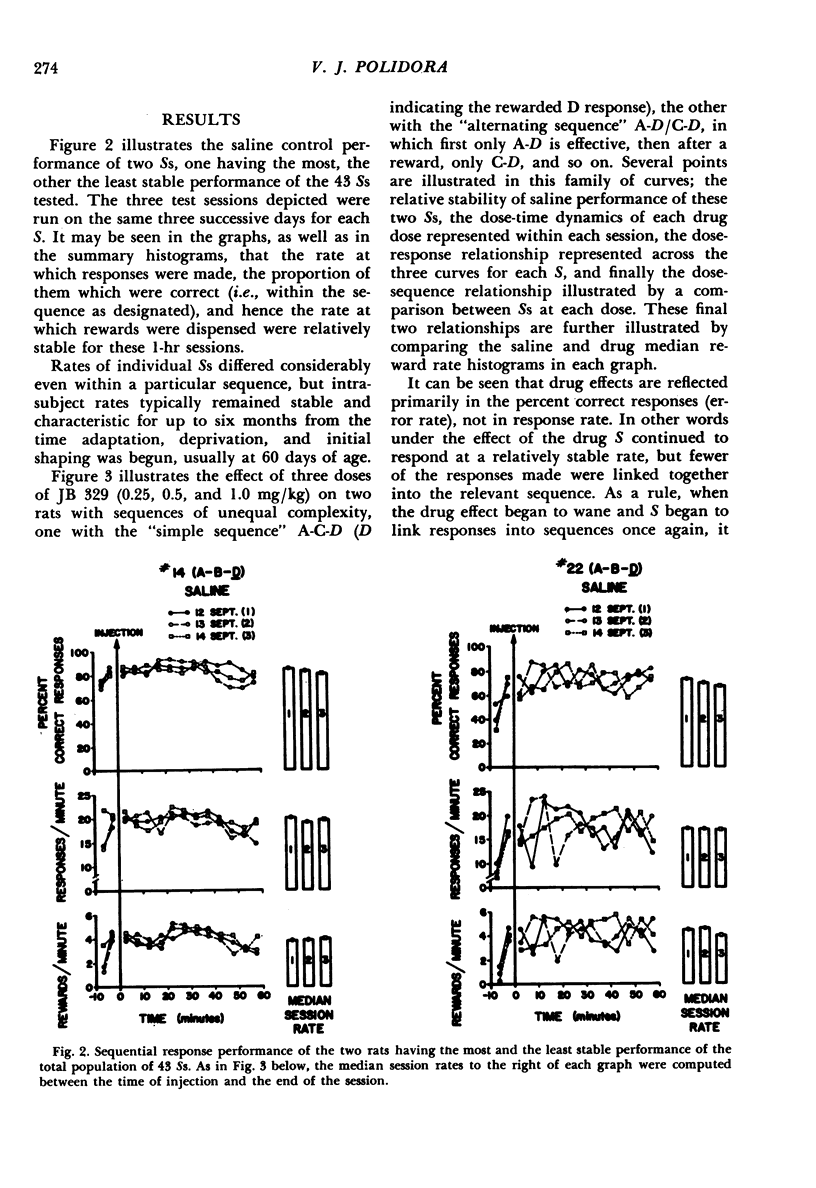
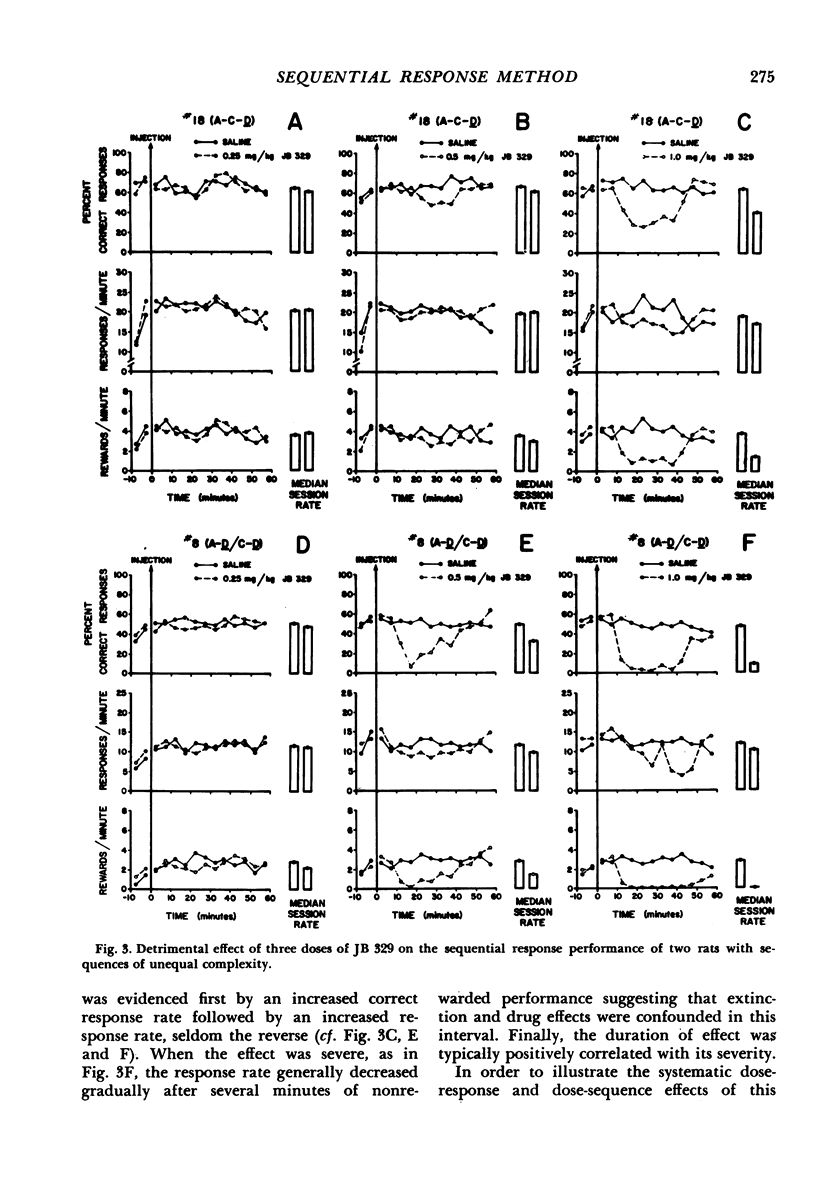
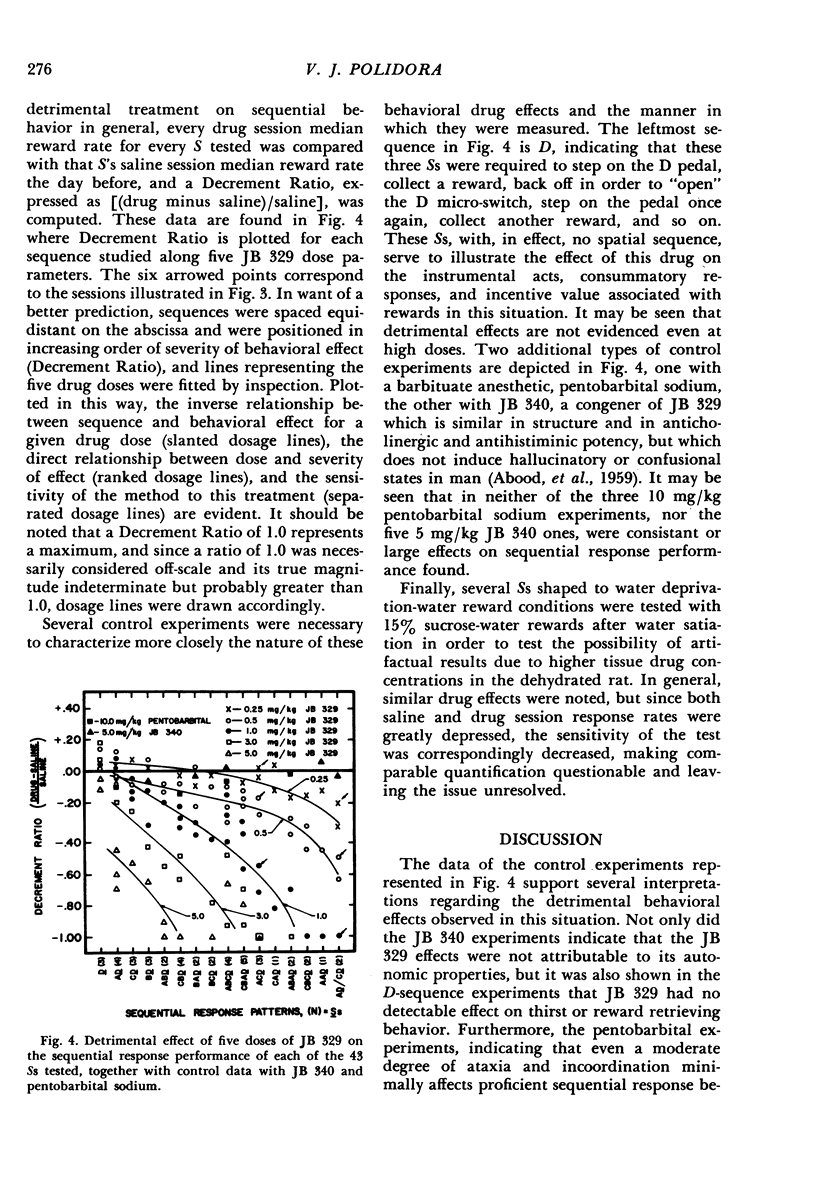
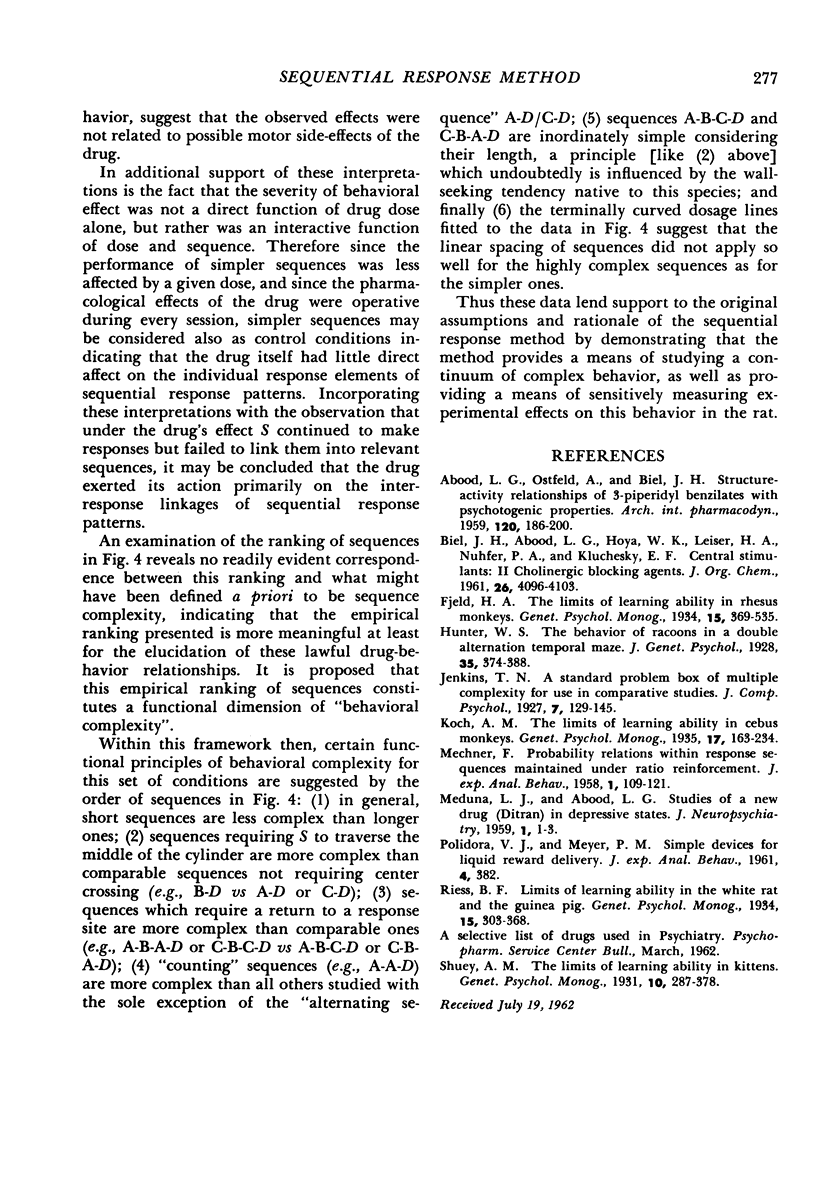
Selected References
These references are in PubMed. This may not be the complete list of references from this article.
- ABOOD L. G., OSTFELD A., BIEL J. H. Structure-activity relationships of 3-piperidyl benzilates with psychotogenic properties. Arch Int Pharmacodyn Ther. 1959 Jun 1;120(2):186–200. [PubMed] [Google Scholar]
- Mechner F. Probability Relations within Response Sequences under Ratio Reinforcement. J Exp Anal Behav. 1958 Apr;1(2):109–121. doi: 10.1901/jeab.1958.1-109. [DOI] [PMC free article] [PubMed] [Google Scholar]
- POLIDORA V. J., MEYER P. M. Simple devices for liquid reward delivery. J Exp Anal Behav. 1961 Oct;4:382–382. doi: 10.1901/jeab.1961.4-382. [DOI] [PMC free article] [PubMed] [Google Scholar]


